Which Precious Metal Should I Invest In?
One of the most common questions that potential precious metals investors have is “which metal should I buy?” With gold, silver, and platinum bullion coins and bars all carried by most dealers, investors can sometimes be daunted by the options that they have at their disposal. In this article, we will discuss the unique attributes of each precious metal as well as the attributes that they have in common with each other. We hope to help you become a more informed precious metals investor and to make wise investment decisions.
Chemically speaking, gold, silver, and platinum are all precious metals, but each one has fairly different physical properties as well as supply and demand characteristics. Those differences often create unique price trends that result in the three metals having relatively low correlations with each other in addition to having low correlations with stocks and bonds. Precious metals help to improve traditional investment portfolios by reducing their volatility and boosting their risk-adjusted returns. Stocks and bonds are sensitive to economic cycles, so the different assets complement each other by zigging while the others are zagging, to put it in layman’s terms.
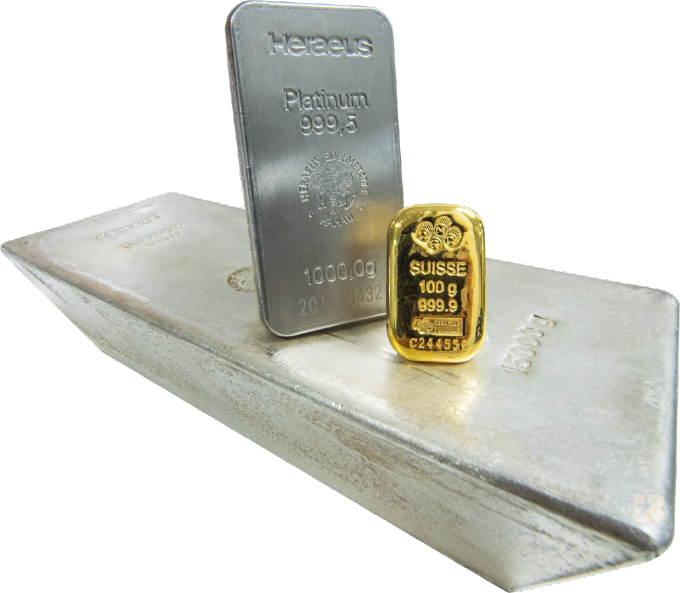
Gold, silver, and platinum are all mined from the earth in the form of ore that must be refined. The process of mining the ore, refining the ore, and then producing high-purity bullion bars or coins is extremely expensive, which contributes to the inherent value of each precious metal. Gold and silver have been mined since ancient times and have a six-thousand-year history of being used as money. Platinum, on the other hand, was discovered comparatively recently in 1735, so it doesn’t have much history of being used as money the way that gold and silver do.
Gold, silver, and platinum are used extensively for manufacturing jewelry and other luxury goods as well as for industrial and technological applications. Each metal has unique chemical and physical properties that make them inherently useful and valuable to society. There is also significant demand for physical precious metals as investments thanks to their long history as safe-haven assets that are free from counterparty and default risk, which are highly desirable traits as our debt-laden financial system grows more complex and precarious by the day.
Central banks are well aware of the positive traits of gold and the risks posed by our global financial system, which is why they hold massive amounts of the yellow metal and continue to accumulate it at a rapid pace. Gold helps central banks diversify their reserve asset portfolios and acts as a form of insurance against financial crises. It is worth noting that central banks almost exclusively hold gold rather than other precious metals, aside from Russia, which also holds platinum in its reserve asset portfolio.
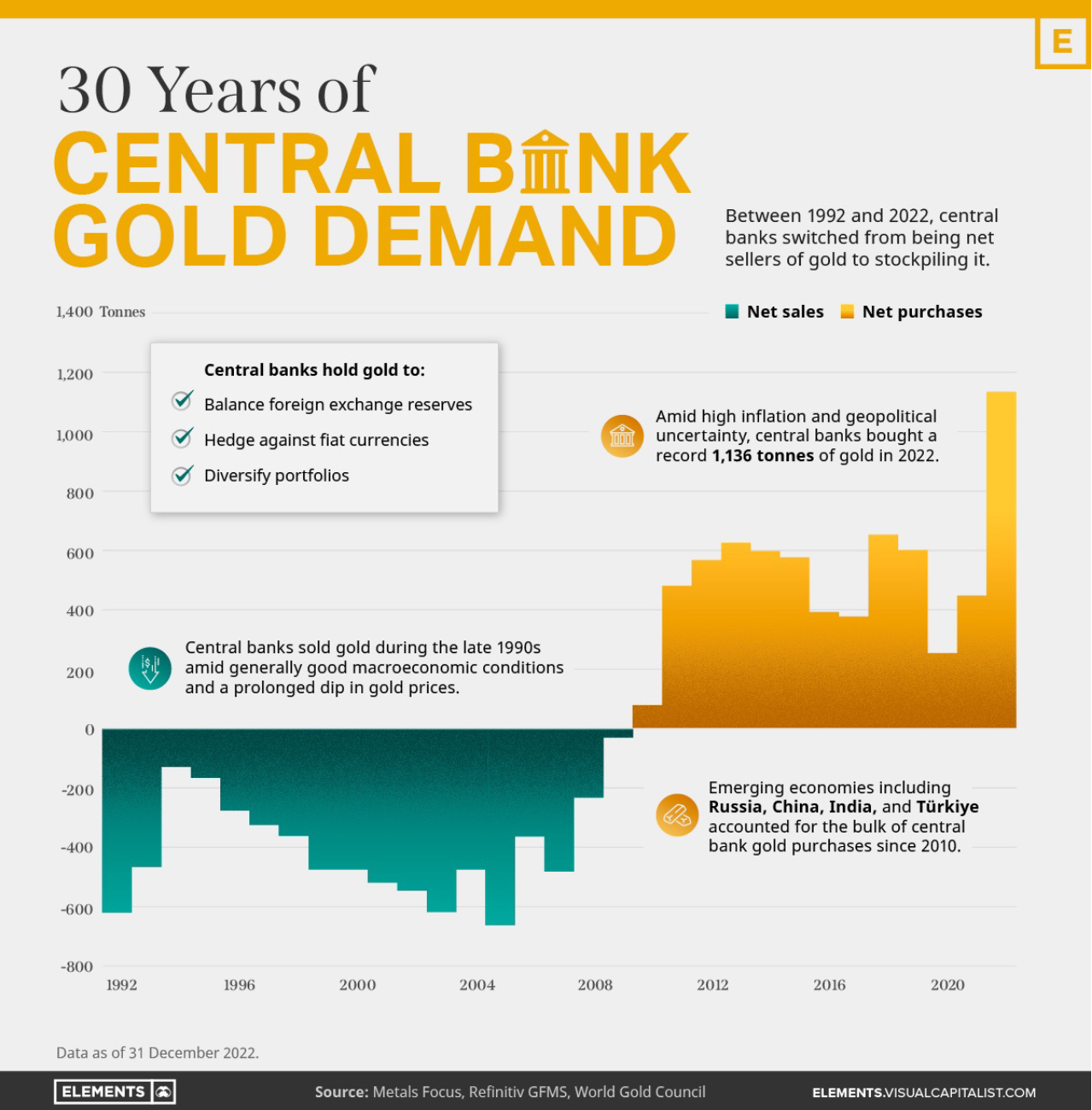
Gold, silver, and platinum are also very popular with both retail and institutional investors who hold them in many forms including physical bullion, exchange-traded funds (ETFs), futures and options, and mining shares. Of course, it needs to be said that only physical bullion is free from counterparty and default risk, which is one of the primary advantages of precious metals in the first place. “Paper” precious metals such as ETFs, futures and options, and mining shares merely track precious metal spot prices but don’t actually give their investors any claims on physical metals nor the ability to convert their shares or contracts into actual bullion that they can take delivery of. Paper precious metals investors are merely shareholders rather than holders of physical precious metals. Though paper precious metals products function well enough in ordinary times, there is a very real risk that they won’t hold up under extreme financial stress, which defeats one of the main reasons for investing in them.
Precious Metals Industry Associations
The precious metals industry has numerous trade associations that collect and publish important data and other information in addition to representing and advocating for the interests of users and producers of precious metals. The World Gold Council (WGC), the Silver Institute, and the World Platinum Investment Council are the most prominent trade associations that represent precious metals mining companies, while the London Bullion Market Association (LBMA) and the London Platinum and Palladium Market (LPPM) represent the interests of the refining sector.
The LBMA and LPPM coordinate daily pricing benchmarks for precious metals, liaise with financial regulators and governments, and maintain Good Delivery Lists of precious metals refiners that have the highest quality standards. When considering bullion products to invest in, it’s advisable to stick with bullion made by mints or refiners that are included on the LBMA’s prestigious Good Delivery List for gold or silver. Similarly, if you are looking to invest in platinum bullion, it’s wise to choose a refiner that is listed on the LPPM’s Good Delivery List for platinum.
Which Bullion Products to Buy
As stated earlier, it’s best to only invest in bars and coins that are made by highly regarded mints and refineries. If you are interested in acquiring bullion coins, iconic coins such as American Eagles, American Buffalos, Canadian Maple Leafs, South African Krugerrands, United Kingdom Britannias, Austrian Philharmonics, and Australian Kangaroos won’t let you down. If you are looking for bullion bars, Switzerland’s PAMP, Argor-Heraeus, and Valcambi, the Royal Canadian Mint, and Heraeus of Germany are all excellent options. Coins and bars made by famous and respected mints and refiners are much easier to sell in the secondary market if you decide to do that someday.
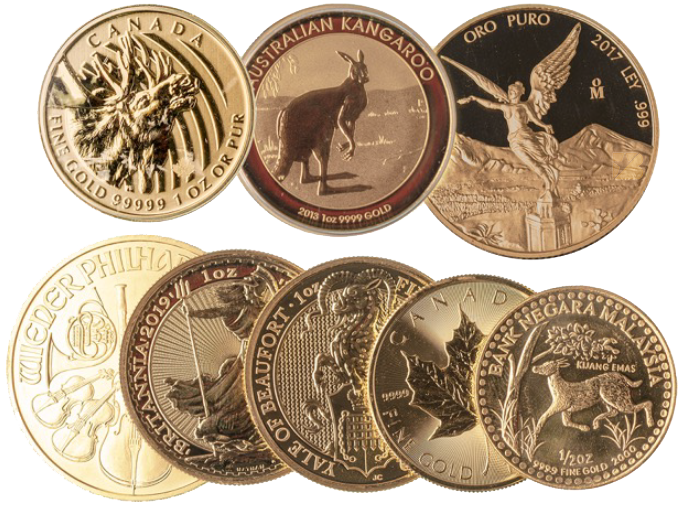
The decision to invest in bullion coins or bars mostly comes down to personal preference because both types track precious metals prices almost identically. Savvy precious metals investors often prefer having an assortment of different types of bullion because each type has its own advantages and appeal. 1 oz is the most common weight for bullion coins, but the most popular gold bullion coins are also minted in 1/10 oz, ¼ oz, and ½ oz weights. Bullion coins are rarely minted in sizes larger than 1 oz, so if you are looking for larger bullion pieces, bars are your best option.
Click the links to see BullionStar’s wide selection of gold bars, gold coins, silver bars, and silver coins.
The Most Popular Bullion Products
While we can’t speak for the bullion industry as a whole, we can share insights about the precious metals and types of bullion that are most popular with our customers. As we’ve stated in our annual report for fiscal 2023, gold represented 73.56% of our overall sales, silver represented 25.28% of our sales, while the remaining 1.16% consisted primarily of platinum sales. Within the overall gold product category, 79.22% of sales were attributed to gold bars, 20.4% were attributed to gold coins, and 0.38% were attributed to numismatic coins, gold jewelry, and other products. Within the silver product category, 86.82% of revenue from silver was attributed to silver bars, 12.97% was attributed to silver coins and rounds, while the remaining 0.21% was attributed to numismatic coins and other products.
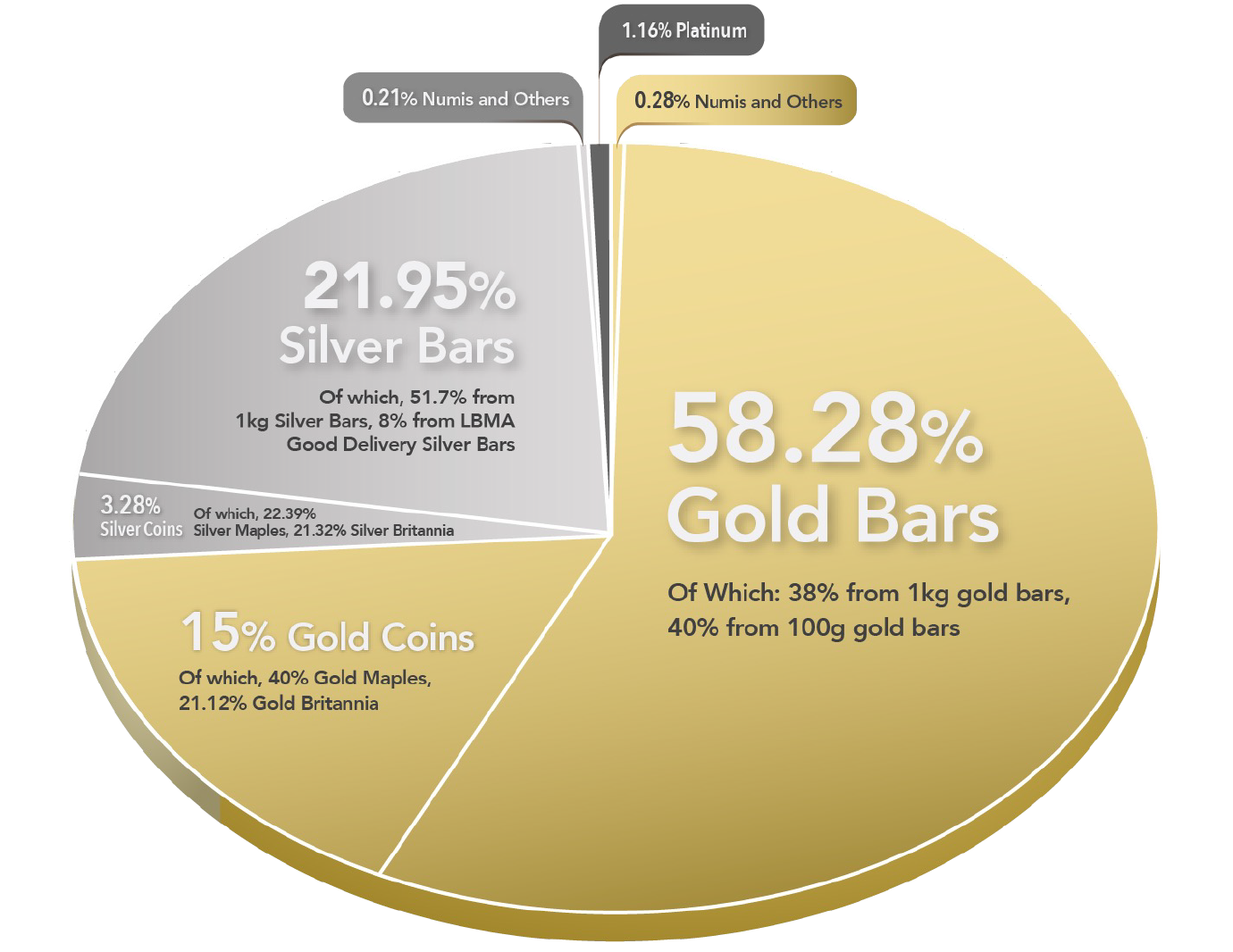
Supply & Demand Drivers
Though gold, silver, and platinum are all precious metals, they have very different economics and price trends from each other due to their different supply and demand drivers. For example, the price of silver is much lower than gold and platinum because it is more abundant in earth’s crust than the other two metals. As of mid-2024, gold and platinum are 84.35 times and 35.9 times more expensive than silver respectively. The relative abundance of each precious metal in earth’s crust is a major determinant of how much is mined each year. Approximately 26,000 metric tons of silver are mined each year, while only 3,000 metric tons of gold and 180 metric tons of platinum are mined each year.
In addition to mining, recycling and loans from central bank inventories are important sources of gold supply. Demand for gold comes from jewelry production (which accounts for nearly 50% of demand), investment demand (27%), central bank purchases (15%), and industrial demand (8%). Much of gold jewelry demand can also be considered investment demand because people in many cultures, such as India and the Middle East, buy gold jewelry as both an adornment and an investment. As a result, the majority of demand for gold is for investment purposes.
As with gold, the supply of silver and platinum mainly comes from mining and recycling with the exception of loans from central bank inventories because central banks don’t hold gold and silver as reserve assets.
Silver’s sources of demand are quite different than gold’s with 60% coming from industrial demand (applications such as photovoltaic cells, electronics, metallurgy, and photography), jewelry and silverware (25%), and physical investment (15%). Platinum’s sources of demand are quite different from gold and silver with 37% to 40% of the demand coming from the automotive industry for use in catalytic converters, jewelry (31% to 38%), industrial uses (18% to 21%), and investment (2% to 11%). A high percentage of the demand for silver and platinum is industrial in nature, whereas most of the demand for gold is for investment purposes.
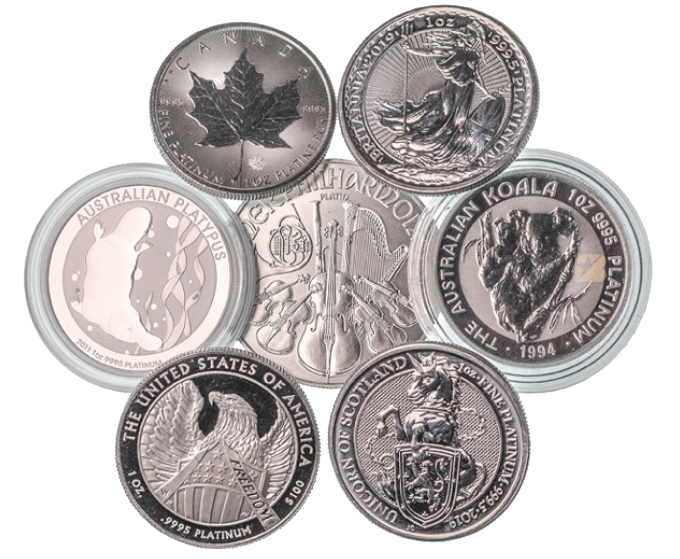
Diversification Benefits From Holding Precious Metals
Because gold, silver, and platinum all have different supply and demand dynamics, their price trends often differ from each other in the short and intermediate term even though they tend to generally track each other over the long run. The lack of perfect correlation among precious metals is actually an advantage for investors who hold all three metals because it helps to improve diversification, which is something that savvy investors go to great lengths to achieve in their portfolios.
For example, gold has a long-established reputation as a safe-haven asset that performs well in times of geopolitical turmoil, wars, inflationary episodes, and financial crises, while platinum performs best when economic growth leads to greater demand for vehicles and catalysts that are used in the chemical industry. Silver, because it is both a monetary and industrial metal, has safe-haven qualities but also benefits from rising demand from booming industries such as the solar panel industry, which has been consuming ever-increasing amounts of silver each year because of the global push for “green” energy. In addition, production issues at silver mines may affect the price of silver, but not gold or platinum, for example. Rising central bank demand for gold would affect the price of gold, but not silver or platinum so much. A new use for platinum in the chemical industry would affect the price of platinum, but not gold or silver.
Gold, silver, and platinum also make excellent additions to traditional stock and bond portfolios thanks to precious metals’ low or even negative correlation with those assets. According to modern portfolio theory (MPT), holding a broad mix of relatively uncorrelated assets helps to improve the risk-adjusted returns of investment portfolios. In other words, a well-diversified portfolio captures much of the upside potential of investment assets with lower volatility because the diverse mix of assets tends to even out each other’s extreme moves. For example, a bear market in stocks and bonds may be cushioned by a rise in the price of gold.
Conclusion
There are several different precious metals to invest in and each one has its own unique qualities. As we have discussed, there are many benefits to holding an assortment of gold, silver, and platinum; you are not forced to choose only one precious metal, thankfully. Furthermore, each precious metal is aesthetically appealing in its own way and is used for making jewelry, luxury goods, bullion coins and bars, as well as numerous utilitarian industrial applications. Precious metals are enjoyable to own, look at, display, and show to your friends and family members. They are also excellent stores of value that have proven themselves over many millennia. Ultimately, the mix of precious metals that you choose to invest in is a matter of personal preference. Whichever precious metals you decide to go with, BullionStar has a wide variety of beautiful and high-quality bullion products for you to choose from.







